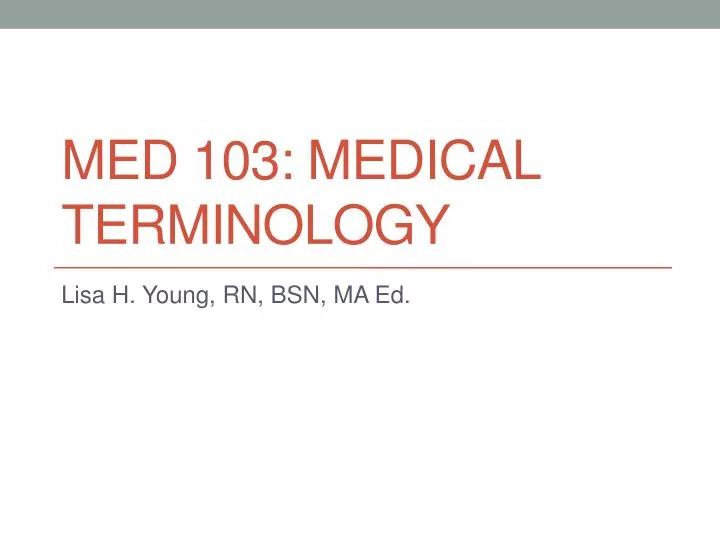

An Introduction to Medical Terminology I. Review of the Greek and Latin origins of modern medical terminology.

In medical terminology, however, things are a little more complicated. ac, -ar(y), -(e/i)al, -ic(al), -ior, -ory, -ous, -ticĪdding an “s” or “es” to the end of a word is often the straightforward method to make a word plural in English and many modern Romance languages. For example, apnea includes the prefix a- (without) and suffix -pnea (breathing).Ĭommon suffixes (letters in parentheses are not always present): Basic Noun and Adjective Suffixes Occasionally, medical terms are composed of only a prefix and a suffix. 4 Accordingly, it is sometimes helpful to read unfamiliar medical terms from right to left.

Means inflammation (-itis) of the appendix. For example, the endings -a, -e, -um, and -us are commonly used to create a singular noun (e.g., crani-um).Īlthough the suffix appears at the end of the term, it often comes first in the definition. For example, “-itis” means inflammation and “-ectomy” means removal.Īlternatively, the suffix may simply make the word a noun or adjective. 3 The suffix usually indicates a specialty, test, procedure, function, condition/disorder, or status. Prefixes are optional and do not appear in all medical terms. It may indicate a location, type, quality, body category, or quantity. For simplicity, the word part tables do not include combining vowel options.Ī prefix modifies the meaning of the word root. The root and vowel together (e.g., neur-o) are called the combining form. A combining vowel (usually the letter "o") is added after the root (e.g., neur- o-logy) to aid pronunciation. For example, cardio-pulmo-nary means pertaining to the heart and lungs gastro-entero-logy means the study of the stomach and intestines.Ī combining vowel is used when a root is followed by another word part that begins with a consonant. This frequently occurs when referencing more than one body part or system. Roots often indicate a body part or system.Ī medical word may include multiple roots. For example, hypothermia has the prefix hypo- (meaning below normal), the root therm (heat or warmth), and the suffix -ia (condition).Ī word root is the foundational element of any medical term. Combining vowel: A combining vowel (usually the letter “o”) may be added between word parts to aid in pronunciation.īreaking a word down into its component parts should help readers ascertain the meaning of an unfamiliar term.Otherwise, the suffix may simply define whether the word is a noun, verb, or adjective. Suffix: The suffix appears at the end of a term and may indicate a specialty, test, procedure, function, disorder, or status.When a prefix is absent, the term begins with a root. Nearly all medical terms contain at least one root. Root: The root gives a term its essential meaning.Prefix: When included, the prefix appears at the beginning of a medical term and usually indicates a location, direction, type, quality, or quantity.Medical terms are composed of the following standard word parts: It is used in most influential medical journals and has become the language of choice at international conferences. Today, medical English is the primary language for international communication. 1 Over the centuries, the language of medicine has evolved into multiple national medical languages. The physicians of Greece are considered the founders of rational medicine, and medical terms are primarily derived from Greek and Latin. These word components are assembled like building blocks to create a vast vocabulary. Most medical terms adhere to a fixed structure of a prefix, a root, and a suffix. At first glance, medical terms may appear intimidating, but once you understand the standard structure of medical words and the definitions of some common word elements, the meaning of thousands of medical terms is easily unlocked. Medical terminology is language that is used to describe anatomical structures, processes, conditions, medical procedures, and treatments.


 0 kommentar(er)
0 kommentar(er)
